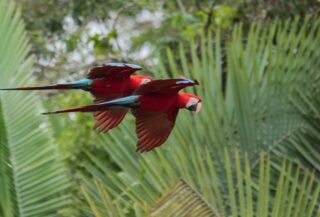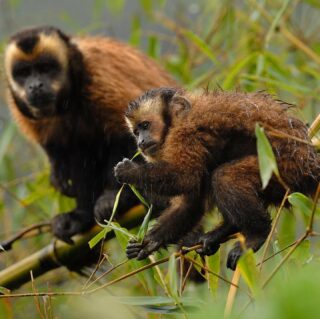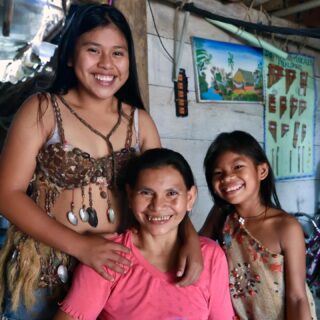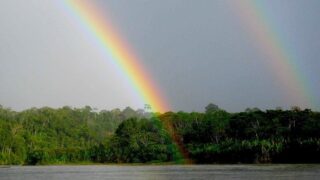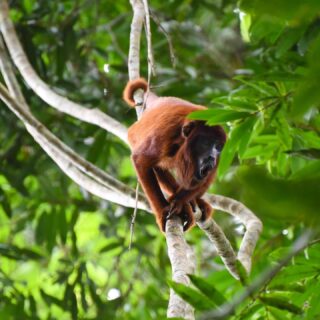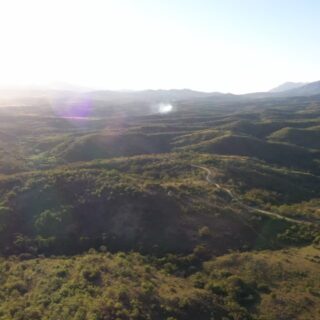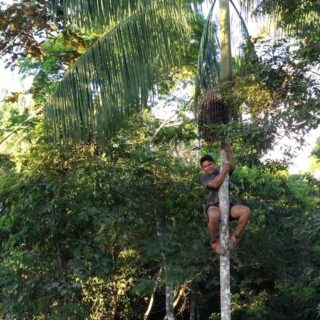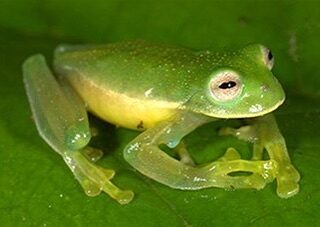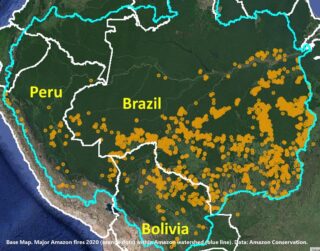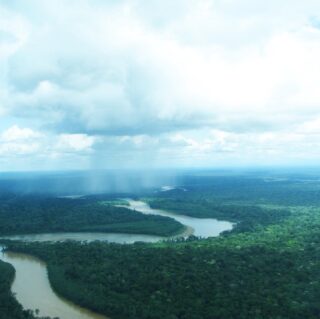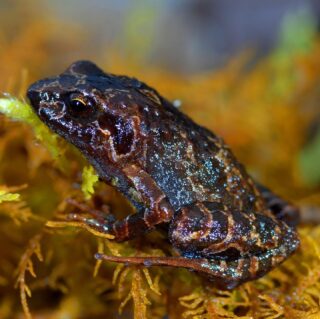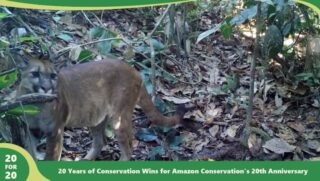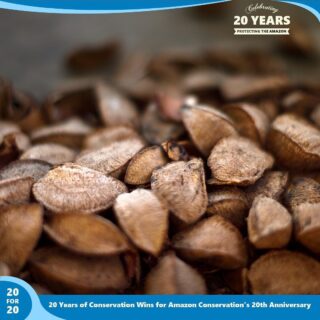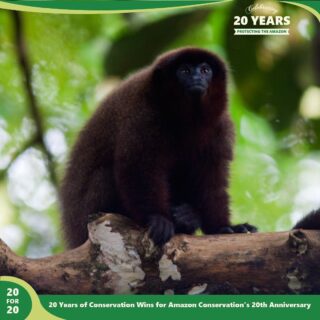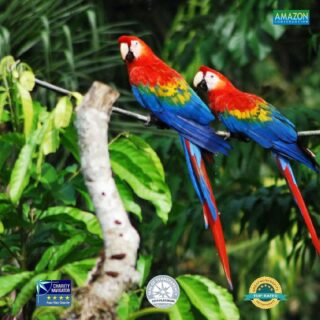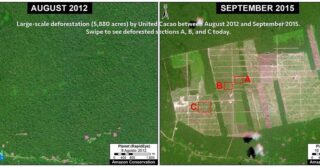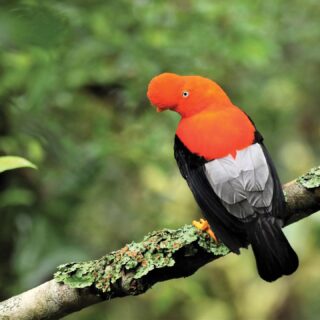2023 was a year full of overwhelming support and enthusiasm for the Amazon, and thanks to the generosity of individuals like you, we’ve been able to scale up our work on the ground and across the Amazon basin to help keep biodiversity, local and indigenous communities, and vital ecosystems protected. From strengthening local forest-based economies to directly addressing nature crimes, we are thrilled to share some of the accomplishments you’ve helped make possible. From all of us at Amazon Conservation, we thank you for your commitment to making a difference.
MAAP 200th: 8 Years of Fighting Deforestation and Fires
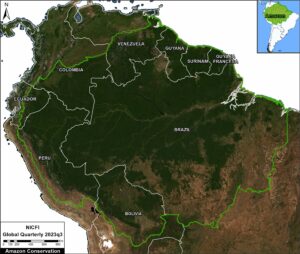 In March 2015, Monitoring of the Andean Amazon Program (MAAP) launched its first-ever report taking a look at the escalating gold mining deforestation in the Peruvian Amazon. Over the past 8 years, MAAP has continued to provide vital information via the latest technology to raise awareness and inspire solutions to protect one of the planet’s most vital ecosystems.
In March 2015, Monitoring of the Andean Amazon Program (MAAP) launched its first-ever report taking a look at the escalating gold mining deforestation in the Peruvian Amazon. Over the past 8 years, MAAP has continued to provide vital information via the latest technology to raise awareness and inspire solutions to protect one of the planet’s most vital ecosystems.
2023 marked our 200th MAAP report, highlighting the current major deforestation drivers across the Amazon, including roads, agriculture (both small and large-scale), cattle, and gold mining. Additionally, newly available data reveals the Amazon is still home to abundant carbon reserves in these core areas.
Thank you to our supporters and funders who have helped us carry out our MAAP work across the Amazon basin for the past years and helped us achieve 100% coverage of the Amazon in real-time.
Stopping Illegal Deforestation on the Ground
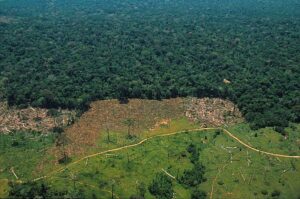 Through our Monitoring of the Andean Amazon Program (MAAP), we’ve been able to work with indigenous groups, local communities, and government agencies across the Amazon to share vital information on nature crimes and illegal deforestation. This year we supported 5 major government interventions against illegal gold mining in both the Peruvian and Ecuadorian Amazon. For example, on June 6, 2023, the National Police, the Navy, and the Specialized Environmental Prosecutor’s Office of Madre de Dios in Peru carried out a field intervention against illegal mining in the Indigenous community of Barranco Chico thanks to the information provided by MAAP. Roughly $11 million worth of mining tools and equipment were destroyed, resulting in one of the largest illegal mining raids in Peruvian history.
Through our Monitoring of the Andean Amazon Program (MAAP), we’ve been able to work with indigenous groups, local communities, and government agencies across the Amazon to share vital information on nature crimes and illegal deforestation. This year we supported 5 major government interventions against illegal gold mining in both the Peruvian and Ecuadorian Amazon. For example, on June 6, 2023, the National Police, the Navy, and the Specialized Environmental Prosecutor’s Office of Madre de Dios in Peru carried out a field intervention against illegal mining in the Indigenous community of Barranco Chico thanks to the information provided by MAAP. Roughly $11 million worth of mining tools and equipment were destroyed, resulting in one of the largest illegal mining raids in Peruvian history.
Helping Sustainable Producers Get Market Access
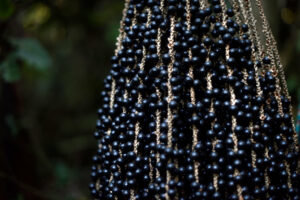 This past year, with support from our Bolivian sister organization Conservación Amazónica-ACEAA, the producer federation FEDAFAP, which represents 8 producer associations and hundreds of local families, closed a major deal with the Bolivian Food Company (Empresa Boliviana de Alimentos) — one of the top food distributors in the country — to become their açaí suppliers. This supply agreement for 253 tons of açaí pulp is a big win for the communities we support, as they can now sell more of their production in bulk directly to end buyers, eliminating intermediaries and minimizing production waste. This success is one of many for our initiative to build a forest-based economy in the southwest Amazon in Peru and Bolivia, which aims to support local people in improving their quality of life through sustainable production while elevating regional economies and protecting forests.
This past year, with support from our Bolivian sister organization Conservación Amazónica-ACEAA, the producer federation FEDAFAP, which represents 8 producer associations and hundreds of local families, closed a major deal with the Bolivian Food Company (Empresa Boliviana de Alimentos) — one of the top food distributors in the country — to become their açaí suppliers. This supply agreement for 253 tons of açaí pulp is a big win for the communities we support, as they can now sell more of their production in bulk directly to end buyers, eliminating intermediaries and minimizing production waste. This success is one of many for our initiative to build a forest-based economy in the southwest Amazon in Peru and Bolivia, which aims to support local people in improving their quality of life through sustainable production while elevating regional economies and protecting forests.
Combatting Nature Crimes Locally and Regionally
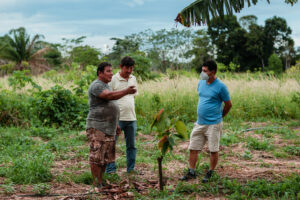 Our sister organization Conservación Amazónica – ACCA, with the support of the Amazonía Que Late Network, has launched Peru’s first Amazon Legal Clinic: a service dedicated to helping empower local people to actively participate in legal processes against environmental and forest crimes. The Amazon Legal Clinic provides free legal advice, representation, and assistance in criminal and administrative matters for local people who want to file a deforestation claim or report a forest crime in the Ucayali, Loreto, San Martín, Amazonas, Cusco, and Huánuco regions. This transformative initiative will provide those affected by forest crimes (e.g. illegal mining, deforestation, illegal logging, or wildlife trafficking) with access to the support they need to report the crime and initiate swift action on the ground.
Our sister organization Conservación Amazónica – ACCA, with the support of the Amazonía Que Late Network, has launched Peru’s first Amazon Legal Clinic: a service dedicated to helping empower local people to actively participate in legal processes against environmental and forest crimes. The Amazon Legal Clinic provides free legal advice, representation, and assistance in criminal and administrative matters for local people who want to file a deforestation claim or report a forest crime in the Ucayali, Loreto, San Martín, Amazonas, Cusco, and Huánuco regions. This transformative initiative will provide those affected by forest crimes (e.g. illegal mining, deforestation, illegal logging, or wildlife trafficking) with access to the support they need to report the crime and initiate swift action on the ground.
At the regional level, in 2023 Amazon Conservation helped establish the Nature Crime Alliance, a global multi-sector initiative to fight environmental crimes across the globe. This joint initiative led by the World Resources Institute (WRI) will help facilitate collaborations with NGOs and local governments to raise political awareness, implement financial commitment, and strengthen operational capacity to initiate solutions to nature crimes.
Launching the Thomas Lovejoy Laboratory
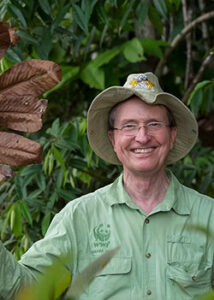 Thanks to funding from the Gordon and Betty Moore Foundation and the Fiddlehead Foundation, our Manu Biological Station inaugurated the Thomas Lovejoy Molecular Biology, Biodiversity, and Climate Change Laboratory in September, created in memory of renowned scientist and former Amazon Conservation Board Member Thomas Lovejoy.
Thanks to funding from the Gordon and Betty Moore Foundation and the Fiddlehead Foundation, our Manu Biological Station inaugurated the Thomas Lovejoy Molecular Biology, Biodiversity, and Climate Change Laboratory in September, created in memory of renowned scientist and former Amazon Conservation Board Member Thomas Lovejoy.
This new facility will provide resources for molecular studies including barcoding, metabarcoding, and environmental DNA using Nanopore® technology, mercury analysis, and respirometry and thermal tolerance. The building will also contain a photography room, a terrace for events, a digital herbarium, semi-permanent collections of insects and fish, and the Tom Lovejoy garden full of edible and attractive plants for birds, butterflies, and other pollinators.

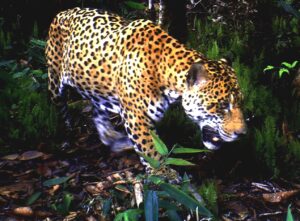
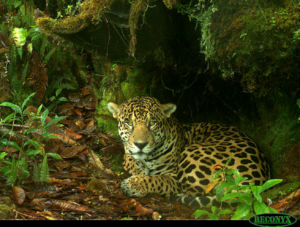 Thanks to your support, you are helping us build climate resilience in the Amazon by strengthening healthy and biodiverse wildlife populations and ensuring long-term forest health to withstand the worst impacts of climate change. Your contributions help us continue to improve our programs that protect jaguar habitat and populations, track forest and wildlife health, and host education programs with local communities to train local people in how to safely mitigate human-jaguar conflicts and sustainably manage local forests for healthy jaguar populations.
Thanks to your support, you are helping us build climate resilience in the Amazon by strengthening healthy and biodiverse wildlife populations and ensuring long-term forest health to withstand the worst impacts of climate change. Your contributions help us continue to improve our programs that protect jaguar habitat and populations, track forest and wildlife health, and host education programs with local communities to train local people in how to safely mitigate human-jaguar conflicts and sustainably manage local forests for healthy jaguar populations.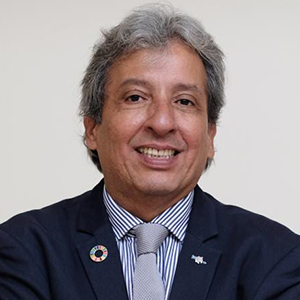 This year’s COP28 (United Nations Climate Change Conference), held in Dubai from November 30th to December 12th, brought together more than 190 governments to discuss global climate action. One of our board members,
This year’s COP28 (United Nations Climate Change Conference), held in Dubai from November 30th to December 12th, brought together more than 190 governments to discuss global climate action. One of our board members, 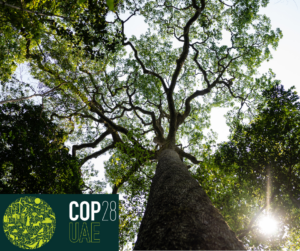
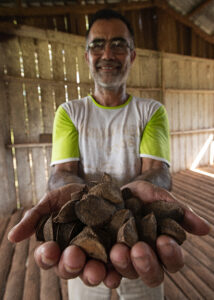
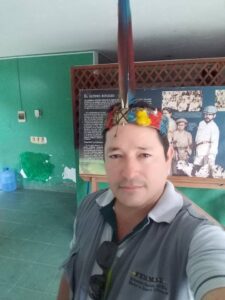
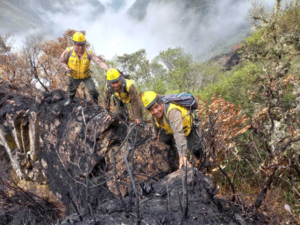 In a region with limited training, knowledge, and tools to prevent or combat fires that escape into forests, controlling fires is critical to minimize their damage to the greater forest and local communities. In response to ongoing droughts and illegal deforestation in the Beni Department in Bolivia, Abraham Pache Canchi, an Indigenous park guard is leading local fire prevention workshops to help local communities and governments be better prepared to swiftly respond to fires.
In a region with limited training, knowledge, and tools to prevent or combat fires that escape into forests, controlling fires is critical to minimize their damage to the greater forest and local communities. In response to ongoing droughts and illegal deforestation in the Beni Department in Bolivia, Abraham Pache Canchi, an Indigenous park guard is leading local fire prevention workshops to help local communities and governments be better prepared to swiftly respond to fires. The
The 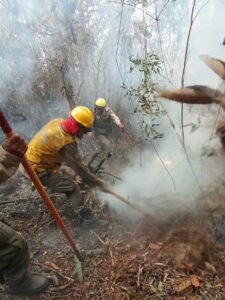
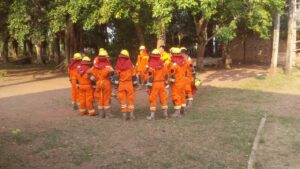 Your contributions are aiding us in encouraging local residents to opt for economic activities that mitigate the risk of fires and may even contribute to slowing their spread. Deforested areas are prone to fire, and fire can spread faster in less forested areas and areas with less diverse crops. Rather than expansive monocultures, we encourage forest-friendly alternatives to destructive economic activities such as sustainable honey, wild cacao, and high-altitude coffee. Product diversification is also important to build resilience in the region so that local income is less susceptible to damage to crops and forests are more fire resilient by being more robust and biodiverse.
Your contributions are aiding us in encouraging local residents to opt for economic activities that mitigate the risk of fires and may even contribute to slowing their spread. Deforested areas are prone to fire, and fire can spread faster in less forested areas and areas with less diverse crops. Rather than expansive monocultures, we encourage forest-friendly alternatives to destructive economic activities such as sustainable honey, wild cacao, and high-altitude coffee. Product diversification is also important to build resilience in the region so that local income is less susceptible to damage to crops and forests are more fire resilient by being more robust and biodiverse.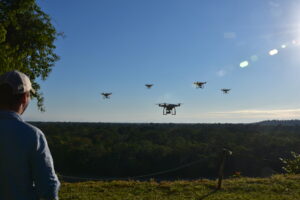
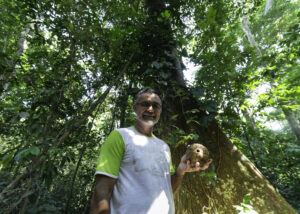 One way that you are helping meet local needs is by supporting local leader and Brazil nut harvester, Manuel Lima, from the Porvenir community in Pando, Bolivia, who has been a major force in the development of a major inter-institutional platform for producers and buyers called the
One way that you are helping meet local needs is by supporting local leader and Brazil nut harvester, Manuel Lima, from the Porvenir community in Pando, Bolivia, who has been a major force in the development of a major inter-institutional platform for producers and buyers called the 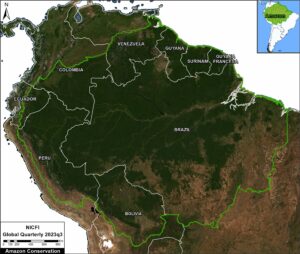 Our first MAAP report published in March 2015 looked at the escalating gold mining deforestation in the Peruvian Amazon.
Our first MAAP report published in March 2015 looked at the escalating gold mining deforestation in the Peruvian Amazon.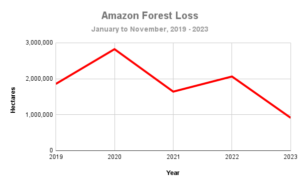
